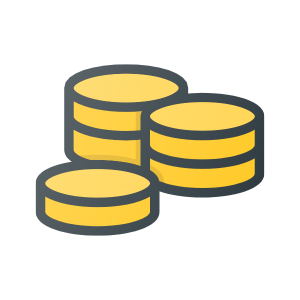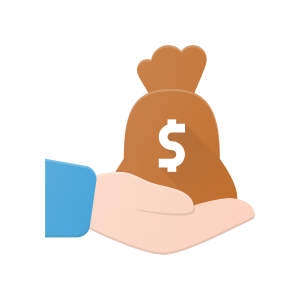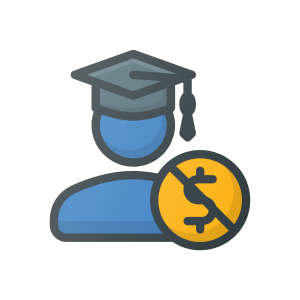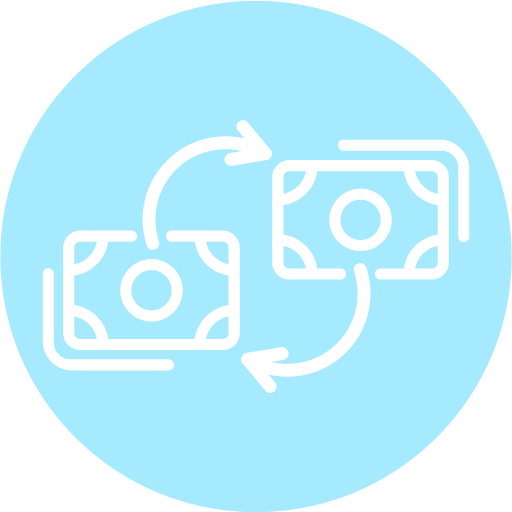Contents
- 1 What does Foreign exchange mean? A general overview of Forex for beginners
- 2 Currency trading Forex explained for dummies
- 3 Spicing things up – leverage and margin Forex manual for beginners
- 4 Time is money – the importance of timing in Forex trading explained
- 5 Summing up all the Forex trading lessons for beginners from this guide
Forex trading, for all intents and purposes, is pretty much the biggest financial market in the world. With a daily trading volume that exceeds $5.1 trillion, this is easy to understand why. Pretty much nothing comes close to Forex, and this is not only because of these numbers. The reason Forex has gotten so popular is because of the fact that it offers something different, and that difference is accessibility. In the past, the world of financial trading was something that seemed quite inaccessible to many people, and for good reason. Large sums of capital were required for it to be even worth getting into, and it was a rather complicated affair.
Today, one needs only an internet connection and a willingness to start, and they have the whole world of Forex trading open to them almost for free. Naturally, with such encouraging conditions, it is understandable that so man new people would be entering this world of trading, and we can see this in the fact that there are currently almost 10 million Forex traders worldwide. While this is amazing, and it aids in creating better conditions for all parties involved, there are some challenges that come with it too, and a shallow and limited understanding Forex trading is one of the main issues that we see today.
You see, Forex trading, while it became much more accessible, is just as difficult as risky as it was in the past. Sure, there are some definite steps that you can take to increase your chances manifold, and they definitely do work, but the reality is that statistics still show, that almost as much as 9 people out of 10 are likely to lose money from Forex. The reason for this is not that Forex is designed to make you fail right from the start. This is definitely not the case. Rather, the main reason is that most people are simply not equipped with the right tools – the necessary knowledge and know-how on getting started with Forex “in the right way”.
This is especially true when you consider how many people are joining the ranks of Forex traders every month. For these inexperienced people, it is even more important to spend the time and energy to get familiar with the ways of how the financial market works. In fact, it is vitally important to do so for them, lest they get in line with all the rest who lose more and more money. This is exactly why we wrote this guide, which will aim to provide some basic information to help the beginners get started in the right way, and slowly working towards success while avoiding some of the main pitfalls that many people commonly fall into.
What does Foreign exchange mean? A general overview of Forex for beginners

For many people, defining Forex trading is as simple as saying that it’s “trading currencies”. While there definitely is truth to that, it simply can not be dumbed down to that one single statement, as there are many other things that it encompasses, whether that be commodity trading, assets and stocks, and more.
When trading currencies, the reality is that it’s mostly speculation on the price changes, and taking necessary steps to profit as much as possible from these changes. This would be the simplest possible way to define the whole thing, but again, there is way more to expand on it, and that’s exactly what this simple Forex guide will aim to do.
The concept of currency trading itself is a reasonably simple concept to explain. You choose two of the currencies that you want to trade on – referred to as a “currency pair”, and then speculate on whether a particular currency rises or falls down. In case the trader thinks the price will increase, they will buy more. In case they think it will decrease, they will sell it. Again, a very simple way of putting it, but it actually IS that simple; at least to an extent.
Currency trading Forex explained for dummies
One of the main appeals of currency trading, besides the simplicity in how it works, is the fact that there is so much diversity of choice. Indeed, you have over 180 different currencies to choose from, which gives you a huge set of options, and the potential to make a lot of profit. With that being said, there are some specifics as to how they all work. Not all currencies in Forex are made equally. The currencies are actually split into different “classes” if you will.
The currencies of the Forex powerhouse countries, such as the USD, EUR, GBP, JPY, etc, are considered to be major currencies and are the main currencies on which people trade. As such, the volatility with these currencies is generally much lower. On the other hand, the currencies of the countries that are not international trade leaders and are not extensively involved with Forex – at least to as much of a degree as the countries that we just mentioned – are considered to be “exotic” currencies, and are much more volatile.
There are some advantages that the major currencies have over the exotic ones, such as greater level of accessibility, as well as special perks when it comes to usage of things like leverage, which is heavily restricted with exotic currencies. Of course, if you’re a beginner, it is generally highly-advised to avoid the more volatile currencies, and instead go for something more stable, in the form of the major currencies that are available.
Choosing your currency pair, then, is the very first step you take. After doing so, now comes the time to actually speculate as to which direction the currencies will go. For the sake of demonstration, let’s take the most common pair – the EUR/USD pair, and let’s take a low rounded number so we can easily demonstrate and give you an idea.
Suppose you decided to buy this pair at a 1.4 exchange rate totaling $2,000. This would make it so that you would be receiving about ~1428 Euros in your trading account. Now, let’s just assume, that from the time of you making this purchase, the price for this pair would go up to1.5 from 1.4, and seeing this price increase, you decide to sell it. If having done so, then you would be looking at a profit of around 95 Euros, due to the differences in pricing. A different scenario would have been the case if the price dropped, and you would have received less money back, corrected accordingly with the price fall.
Again, this is abroad oversimplification of the matter, but in general, this is how it works, and the idea of it is pretty simple – you buy an asset/currency for a certain price, and your final goal, at the end of the day, is to sell it for a higher price. This is trading at its essence, and everything else is simply something that you will learn on your way as you go.

FX rates for dummies – How the rates on currency pairs are determined
Although we have already described the basic process of how currency trading works, it should be noted, that there are specifics as to how it all works, and it’s a tiny bit more complicated. The thing is, although it all mainly comes down to the exchange rate at hand, the rate itself is actually dependent upon two separate factors – the ask prices and bid prices. Let’s discuss what these two mean, and what exact significance they hold in determining the exchange rate.
The ask price represents the price that the broker requires for selling a particular asset, while the bid price is the price that the broker will be offering you for buying the asset that you’re selling. Almost invariably, the bid price will be lower than the ask price. The reason for that is that the brokers themselves are the middlemen between the clients and the banks/credit companies/hedge funds, so this means that there are always a lot of expenses that the brokers have to make. Considering this, the bid price will almost always be lower.
Spreads and pips
When it comes to making profit through Forex, a trader needs to understand how this works from the broker’s perspective as well. A question we commonly encounter by a lot of traders is how the brokers themselves make money. After all, building, promoting, and maintaining a Forex website is quite an expensive affair for the brokers, not to mention all the various expenses such as taxes, the compensation fund fees, liquidity reserves, and much more. All of this is quite a lot of money, and for a broker to procure all of this, quite substantial sources of income are required.
This is one of the main reasons as to why there is always a difference between the ask prices and the bid prices, as they represent one of the main avenues of profit for the brokers. When buying an asset, you will be paying your broker the ask price, and whenever you’re selling something to them, you will be getting the bid price, which is less. This difference is otherwise known as a “spread”, and, again, represents the main source of income for most Forex brokers.
Ask and bid prices are very important to take into account. The example that we brought above was a very simplified one. In reality, during your day-to-day trading, the ask and bid prices will be one of the most important things to consider at all times. Let’s take a look at the same example with this new perspective.
In our example of USD/EUR, we assumed the rate of 1.4 for a $2000 total. While the rate is 1.4, your ask price (The amount you have to pay), may be 1.48. This would mean, that you would be paying $2000 to receive around 1351 Euros. This is due to the spreads, which is the way the brokers make a profit.
The spreads are closely tied to pips, which are also one of the most important things to be aware of for any trader. A pip is what would be the difference between the prices, no matter if they ask prices or bid prices. Essentially, the pip is a unit of measurement that expresses the changes between two values. If a USD/EUR rate changes from 1.1154 to 1.1155, then this 0.0001 USD change would be called one pip. In general, a pip is usually the last decimal of a price number.
Of course, this is a heavily simplified approach to explaining spreads and pips, but remember, this guide is “Forex trading for dummies”. Even after reading this, you are expected to conduct your own research, which should be of much more of a deeper and extensive nature. In fact, this should be the case for pretty much everything Forex-related that you do. Whenever you learn a new concept, make it a habit to research it to as much of a degree as possible. This way, you will be well on your way to success!
A closer look at currency trading for dummies
Alright, so we now know the basic details about currency trading in Forex, and what are some of its most important components that make up the whole process. Now, let’s delve into a bit more detail on how exactly currency trading looks in Forex, and what are some of the different “methods” or approaches that one can take when currency trading.
Now that we’ve covered the most basic elements and characteristics of how Forex trading is done, let’s introduce some additional details about different ways of trading currencies. In general, the most common form of Forex trading is considered to be spot trading. Spot trading is a form of trading where you trade on the actual physical assets, rather than simply their difference, as is the case during CFDs (Contracts For Difference).
In terms of spot trading in the context of currency trading, you would sell your actual, physical currency, and buy the other currency that you want. This is generally considered to be a more profitable trading method, but of course, it has larger costs and risks associated with it too.
As for the CFDs, which also happen to be quite a popular way of trading, things are quite a bit different. Let’s take a quick look and discuss some of the main specifics regarding CFD trading.
Essentially, the main advantage of CFDs is that you would be buying not the actual asset/pair, but a contract for this pair, which would allow you to trade on this pair without actual ownership. You would be going into an agreement with a second party for a set time, and be waiting for the asset going up or down. Depending on the outcome, you will be paid – or you will be paid – accordingly. If the price of the pair goes up after the CFD’s set time goes up, then you will be paid by the second party. If the price goes down and your CFD deprecates, then you will be the one paying.
There are many other different forms of trading that resemble the way CFDs work. As an example, there’s options trading. FX options for dummies would be quite simple to explain – essentially, trading on options allows you to make a profit in a “binary” way. You would be opening a position, and essentially be “betting” on the asset going up or down. In case you make the correct call, you would be paid a set amount, as opposed to being paid the difference, as is the case with CFDs.
While CFDs indeed have the potential to bring you a lot of profits, they are quite risky, which is a discouraging factor for many. For people like this, index trading may be an excellent solution. Index trading is a form of trading that lets you trade on many different assets/currencies’ collective values at once, which is great for minimizing the risk, albeit at the expense of profitability.
Another popular method of trading are forwards. Explaining it in an “FX forward for dummies” way, essentially it is when two parties enter into an agreement in the form of a contract, which would obligate the two parties to engage in a trade on a pre-determined date, with a pre-determined exchange rate. This mostly happens in the form of “physical” trading, as it’s really helpful for the people who actually need the physical goods delivered to them. As an example, a restaurant may purchase thousands upon thousands’ worth of meat at a certain date, if they believe the price will be going up. Of course, this is an oversimplified way of putting it, but the general idea is there.
 Spicing things up – leverage and margin Forex manual for beginners
Spicing things up – leverage and margin Forex manual for beginners
The preceding info, as you may have noticed, was of quite an entry-level natured. It was merely information that should be known by pretty much all the beginner traders and is not something that would be often discussed by high-level traders that have experience.
Of course, the guide itself is quite entry-level, and we won’t be delving too much into information that would be applicable to the advanced level of Forex trading. With that being said, we believe, that there are a couple of important concepts that need to be discussed before one can be considered ready for Forex trading. Let’s briefly discuss this information before wrapping up.
One such concept is leverage, which, in many cases, is a matter of great interest for the traders that are interested in making large sums of profit, especially with smaller capital to start with. To better understand leverage and how exactly it works, let’s first examine one aspect of Forex trading relating to the trading methods that we have already discussed.
One thing that many people commonly complain about is the fact that making a huge amount of profit is not possible in Forex without investing huge amounts of capital in the first place. Depending on the specifics of currency rate and similarly important aspects, your profit, even after opening a position worth $10,000, may be as low as $10 in some cases, which is definitely not in the range that many people would consider enticing. Additionally, the thing is that there aren’t even as many people around who would be willing and/or able to invest $10,000 in the first place. Considering this, many people don’t seem to find Forex trading all that attractive, as the profits simply are not on an exciting level.
If you are of this opinion, then leverage and margin in Forex trading may be of great interest to you. When used right, leverage can really open up the doors to a huge amount of profits, which you otherwise simply won’t have had access to due to a lack of capital. Brokers know this, and they’re aware that low profits due to lack of capital have the potential to discourage a lot of traders, and as such, they now offer leverage, which can act as a great incentive to many people. Leverage can essentially be looked at as a loan, for lack of better word. Let’s take a look at an actual example, so you can get a better idea as to how it all works.
let’s assume your broker offers a leverage of 50:1, as this is what is commonly considered to be the international “standard, with 30:1 being a close second. So, assuming this leverage of 50:1, and assuming that you were to utilize it, upon your deposit, say $50 for example, the broker will give you the ability to turn it into a $2500 credit. This would give you the ability to be in charge of a position that is five times greater in value, thus giving you access to a huge amount of profit.
However, it needs to be noted, that usage of leverage is not a simple “free-for-all”, and there are certain rules. As an example, for the usage of leverage, one has to comply with the relevant margin rules. in case of a 1:100 leverage, as an example, the margin requirement would be 1% or 1/100. This means, that in case of your position being worth $100,000, you would need to have the minimum amount of $1,000 on your account before you can use leverage.
Risks of using leverage in Forex for new beginners, and the limitations placed on it
Additionally, the most important fact to underline here is that using leverage poses some serious risk. Just like it increases the possible profits that you can make, so does it increase possible losses. Essentially, you could say that it’s a double-edged sword, and as such, caution needs to be exercised. When you open a position with leverage and it starts going south, if and when you lose money, it will start taking the difference from leverage from your actual trading account’s balance. This means, that you stand a legitimate risk of losing all the money you possess in your account.
In the past, many people would be going bankrupt, and would actually be indebted to the brokers. This was such a huge issue, that governments and regulators decided to come up with a specific rule that would prevent this from happening. This rule was the negative balance protection rule, which needs to be followed by all the brokers that are regulated by established and respected regulators such as FCA and CySEC. The rule states that the trader can not lose more money than they actually have in their own account. Due to this, if you are using high leverage, start steadily losing money and it starts exceeding your actual account, the broker’s system will, in most cases, automatically close the trade to prevent this from happening.
In general, leverage is one of the “hottest” topics when it comes to Forex trading and its market instruments, and especially so in the context of Forex for newbies discussion. While it is beloved by thousands upon thousands of traders around the world due to the number of profits that it opens the doors to, it is hated by equally as many people, who, in their beginning stages, may have lost a large amount of money.
Due to this danger, many governments and regulators have now imposed some restrictions on the usage of leverage, and sometimes these restrictions are quite severe and serious. Some of the most common standards of leverage restrictions are 50:1 for different countries around the world, and 30:1 around Europe as per ESMA’s recommendations. This, of course, will vary heavily depending on the country, as in some areas, there is leverage as high as 500:1 or even more, while in some countries like Japan, leverage can be as low as 5:1.
Leverage ranges in specific countries will also vary depending on the assets themselves. Usually, these limits of 50:1, 30:1, 100:1, etc, are the upper limits, reserved only for the least-volatile assets such as major currencies. As the volatility of the asset increases, so does the intensity and strength of the restrictions. For cryptocurrencies, leverage can go down as low as 2:1, which is understandable, considering how volatile they are.
Time is money – the importance of timing in Forex trading explained
One of the main appeals of Forex is its uninterrupted accessibility. As compared to most other forms of trading and financial markets, Forex is, without a doubt, the most accessible one, and that’s one of the main reasons as to why Forex for noobs is so attractive. Additionally, Many people love Forex precisely because of the fact that they can trade pretty much at any time. Indeed, Forex is open 24 hours a day, and its only downtime is during the weekends, on Saturday and Sunday.
From Monday till Friday, it’s always game-time, allowing one to do trading on their own terms, whichever way they like. However, what many people don’t know is that Forex actually operates based on different time zones. Due to its international nature, Forex doesn’t have a “home”, but it does use timeframes based on four major important regions, which are considered to be the “trading Meccas”. These four zones would be the United States, Japan, The UK, and Australia; and specifically, the cities of New York, Tokyo, London, and Sydney.
The hours of the trading day are then split in different time windows, all based on their respective region. Assuming EST (Eastern Standard Time), the hours for specific markets are
- 8 AM – 8 PM – New York
- 7 PM – 4 AM – Tokyo
- 3 AM – 12 PM – London
- 5 PM – 2 AM – Sydney
Obviously, some of these timeframes are overlapping with each other, which is definitely a major thing to consider. Additionally, some specifics of timing provide certain benefits to certain markets. As an example, although Sydney is not considered to be a major market on the same level as New York or Tokyo, the fact that it’s the first market to open does give it a bit of an advantage.
Day trading and carry trading
Timing, in general, is one of the most important things to consider for any Forex trader. The reason for this is the dynamic nature of Forex itself. Here, each and every second does have the potential to matter quite a lot. Additionally, the different things and events, as they happen, can have a huge impact on the market. Sometimes, even seemingly-insignificant things can have a very dramatic effect. This is exactly why some people are obsessing over each and every small economic event, and trying to use it to their advantage.
However, there is definitely more to it than just the Forex market hours. One of the most important Forex trading terms to understand is the day trading and carry trading. There are some definite differences between the two, and understanding them is a very important part of defining your trading experience.
Day trading, essentially, is a form of trading where you would open a position on a certain day, and close it on that very day before the next trading day begins. This is more of a short-term approach, and as such, obviously depends and reacts heavily to the volatilities and fluctuations of the market.
As for the carry trading, it is a form of trading where it would last longer than a day. Also referred to as “rollover trades”, this form of trading is more focused on the long-term approach, with in-depth planning and usage of all sorts of small pieces of information regarding the financial market, along with fundamental analysis.
When talking about carry trading, we believe it’s important to discuss FX swap for dummies. A swap is, essentially, an interest rate that is accrued to the overnight trades. Generally, every currency on the Forex market has its own, certain interest rate, which is set and controlled by the central bank of the country from which the currency hails. Naturally, the interest rates of the currencies are different in the context of different currency pairs. This, of course, can have a definite effect on the actual profits you can make. If the currency that you’re buying has a higher interest rate than the one that you sell, then the swap commission will be credited on your account. On the other hand, if the currency you’re buying has a lower interest rate, then you’ll be the one paying the difference.
Of course, choosing which one is more appropriate for you depends on your specific goals and requirements, but of course can change as you learn Forex trading better, and develop your own “style”. If you are interested in short-term profits that can be of an “explosive” nature with their high profits, then day trading may be for you, but you will have to live with the fact that volatility is going to be quite high. On the other hand, if you are looking for a trading experience that, for the lack of a better word, could be regarded as “safer” due to its lower volatility, then carry trading may be more of your thing. It all depends on what, in particular, you are looking to get out of your trading endeavors.
 Summing up all the Forex trading lessons for beginners from this guide
Summing up all the Forex trading lessons for beginners from this guide
If you have never researched any information about Forex before, then it may so seem that there was too much to take in from this guide. However, rest assured that this was simply very basic information; something that any trade needs to be aware of as a bare minimum. With that being said, you can be sure, that today you have learned a lot of things that will be pretty much central to your success. Now, let’s discuss some of the key takeaways that you should remember from this Forex trading beginner’s guide, and start applying right away.
We learned that Forex is the biggest financial market in the world, with almost $5.1 trillion of the highest daily trading volume recorded. This gigantic market allows for huge opportunities for all kinds of would-be traders, no matter their goals, experience, or preferences. This huge market combines over 180 different currencies that you can trade and make a profit on.
Trading on these currencies, theoretically, is quite simple. First, you choose two currencies that you want to trade on. This is known as choosing a “currency pair”. After choosing your pair, the most important factor to take into account is the exchange rate of this pair, which can essentially be viewed as the “price” of the pair.
After this point, depending on your actual method of trading, you will then proceed to speculate about the price movement of the pair. If you make a correct “prediction” and the price goes in your chosen direction, you make a profit, whereas if the opposite happens, you make losses accordingly. It all depends on how correct of a decision you will make. Which, itself, depends on many different factors. This is where your external sources of influence can come in, such as your increased knowledge of the financial market, the information gathered from making technical and fundamental analyses, the information provided to you from your peers or some kind of an organization, and more.
Of course, as we have already mentioned, this is a general overview of what is the Forex market. Forex trading, and the theory surrounding it, can go as deep as you would like it to go. It’s really a rabbit hole, and considering how much of a dynamic and all-encompassing market it is, this should come as no surprise. As such, if you are looking to stay in this in the long run, then you will do yourself a huge favor if you start learning as much as possible right from the get-go. Your priority should be to never start growing as a trader by increasing your knowledge and experience and learning as much as possible from the mistakes you make along the way. With this mindset, your success will not be just a likelihood, but rather, a foregone conclusion and an inevitability.

